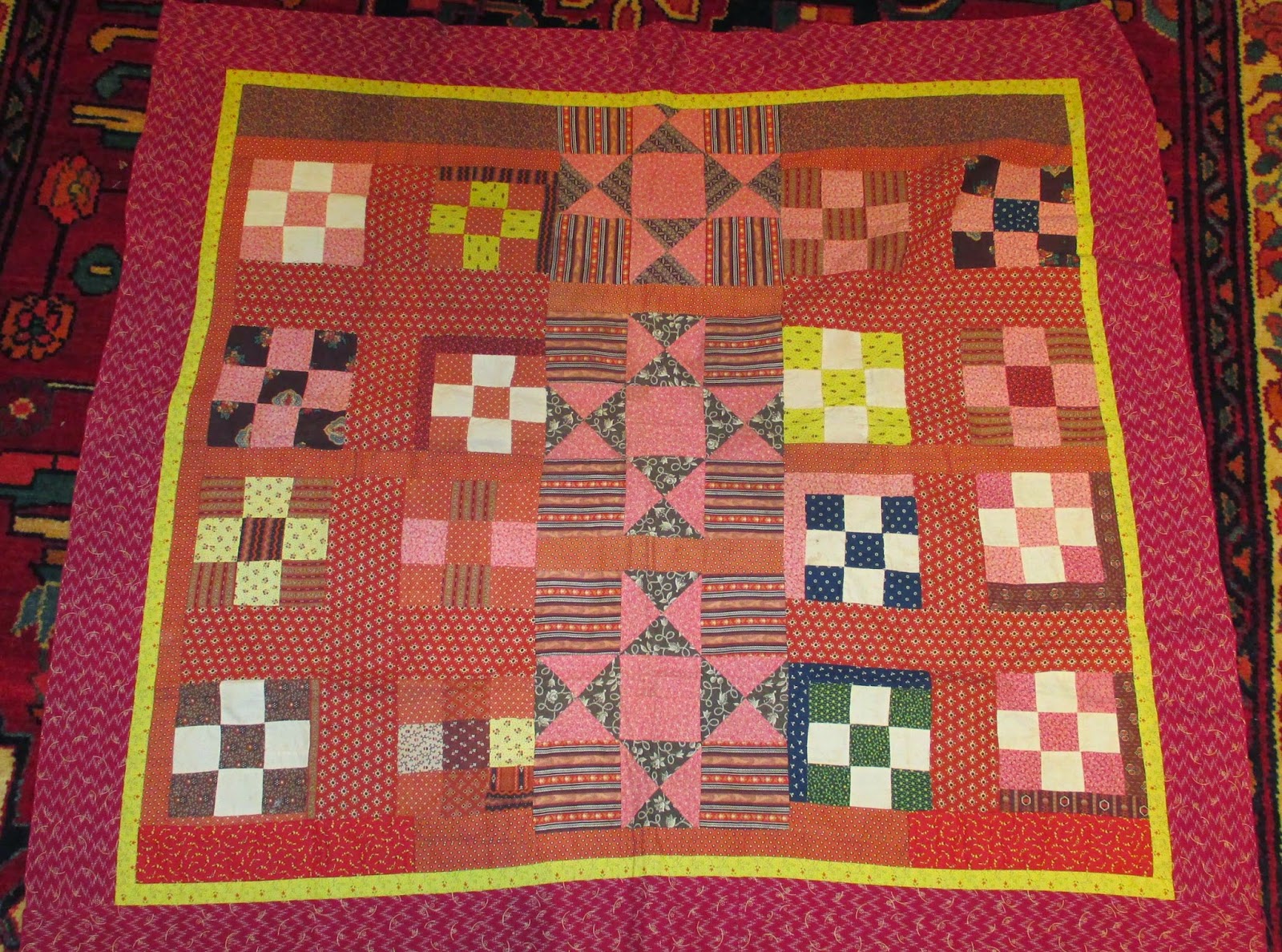This Mariner's Compass from Scottsdale, PA was labeled as Amish made in 1990. The label called this a "designer quilt," likely because it used one of the early designer border prints.
The Medallion style quilt's many borders!
 |
This Flying Geese in Cabin was marked "Amish."
An interesting Carolina Lily variation from Scottsdale PA.
The sashing is a designer border print.
Two floral appliqués. The first is Country Love by Rachel Pellman. Her Country Bride quilt sparked a whole series of new appliqué patterns that appealed to the Country decorators in the 1990s.
I saw this quilt in these colors on Pinterest, pinned by Amish Country Lanes .
The second looks like another Rachel Pellman pattern but I have not been able to identify it yet.
The 1990s colors of mauve and dark green predominate in these quilts. I assume the colors were chosen to coordinate with the decorating colors of the era, the quilts meant for actual use. Lucky for Dianne, these were unused and unwashed, in original condition. Quilt marking lines could be seen. An Amish made Whig Rose is dated 1989 from Evansville, IN.
An unusually large reverse appliqué Hmong quilt was stunning.
It was found in St. Louis.
































































